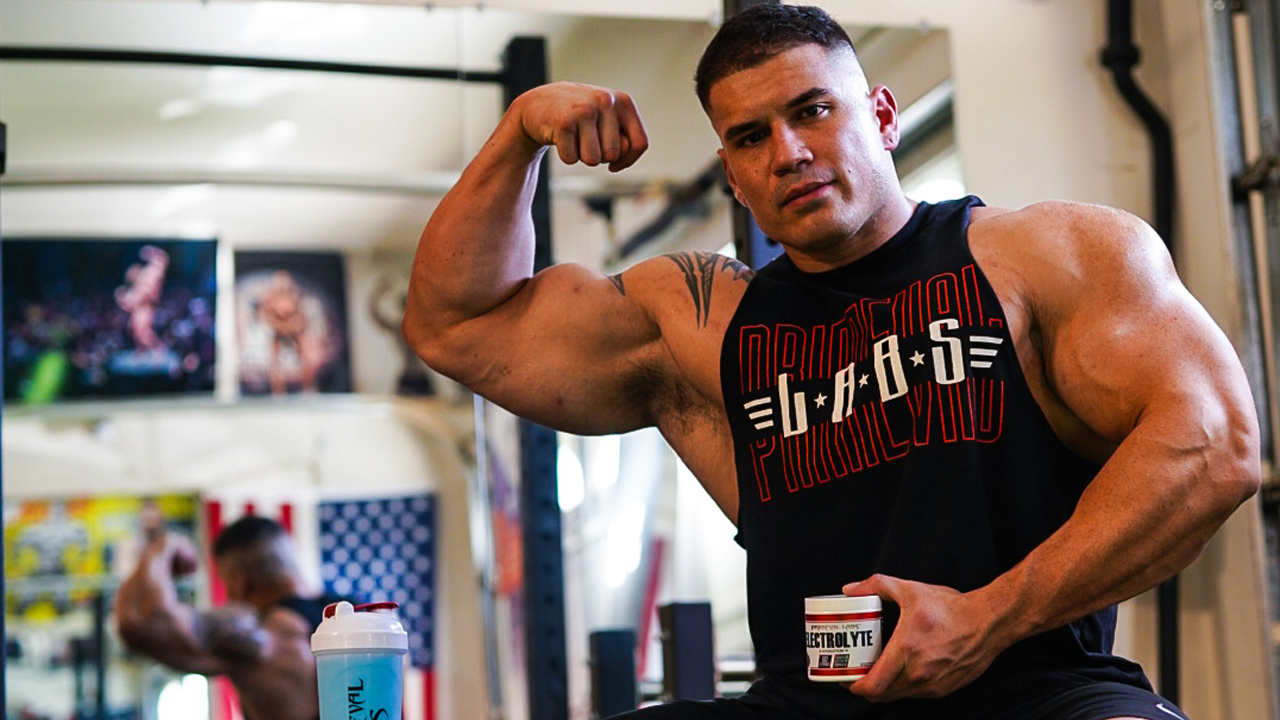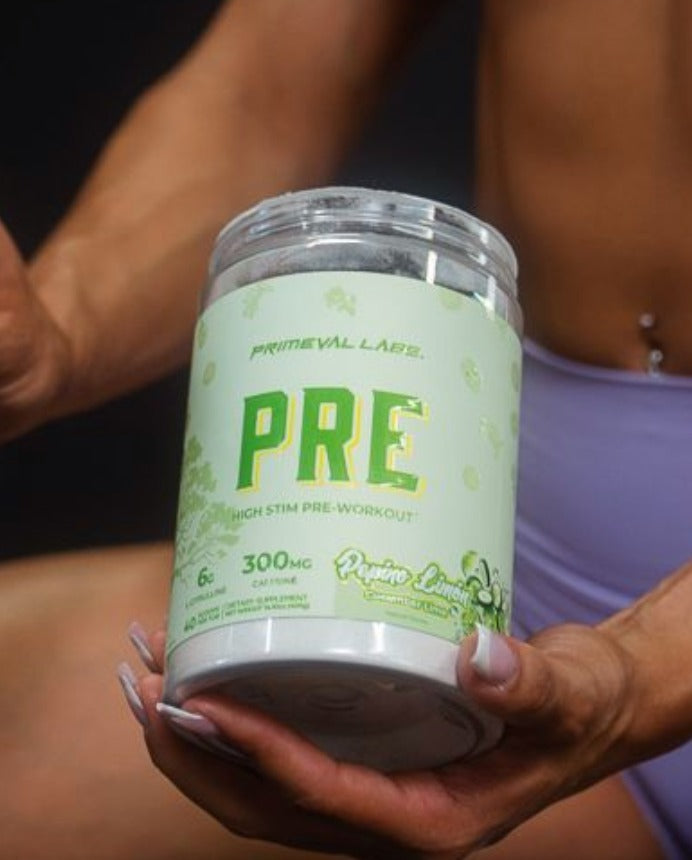The bench press is one of the most beloved upper body exercises in existence. Lauded for its ability to enhance both muscle and strength development, the bench press is an exercise that is considered by many a “must have” exercise in any training program.
Nevertheless, the bench press can be a frustrating exercise, especially for those that struggle to hit 225 pounds for reps.
If this is you, then you’re in luck as we’ve assembled some of the best tips to help you build a bigger bench.
Let’s GO!
10 Tips to Build a Bigger Bench
#1 Warm Up Properly
So often when individuals think of “warming up”, they resort back to their high school gym days of doing jumping jacks, jogging, or some other form of steady state cardio.
While these forms of exercise are good for increasing circulation and loosening up any kinks that may have developed from sitting around all day, they do very little to actually warm up your nervous system, muscles, joints, and connective tissue for the bench press.
Instead of joining the rest of the cardio bunnies on the treadmill or elliptical, head to the bench.
The best way to get your body primed for heavy lifting and improve your performance is to perform several warm up or “feeder sets” of the exercise you’re performing.
This progressive warm up not only primes the muscles, joints, and connective tissue for the more intense work to come, it also fires up your nervous system so it can tell your muscles to contract more powerfully, thereby helping you improve your performance on the bench press.
Here’s one way we like to warm up for the bench press:
- 8 reps using only the bar
- Rest 60 seconds
- 5 reps with 50% working weight
- Rest 60 seconds
- 3 reps with 70% working weight
- Rest 60 seconds
- 1 rep with 90% working weight
- Rest 60 seconds
- First working set
If you have other pressing movements after the bench press, there is no need to perform an extended warm up and you’ve already primed those muscles with your bench work.
However, if you perform a legs or back exercise following the bench press, then it’s recommended to perform a thorough warm up for that particular body part.
#2 Use the Right Set Up
Lifting big weights on the bench press is as much about grit, determination, and raw power as it is about proper set up and execution.
What we mean by this is that no matter how strong you think you may be, if you’re using substandard technique, you’ll never realize your true strength on the exercise.
As such, it’s important you set yourself up for success by using the right set up.
Here are some important cues to keep in mind when preparing to bench press:
- Lay back on the bench so that your eyes are beneath the bar
- Anchor yourself to the bench by fixing your head, shoulder blades and glutes to the bench.
- Maintain the natural arch in your back while keeping your chest high and your shoulder blades pulled down and back
- Position your feet below your knees and focus on driving them through the floor in order to create a solid base from which to press
- Squeeze the glutes and brace abs for stability
- Unrack the bar tand row it down to your chest
#3 Keep it Tight
It’s incredibly common for individuals to allow their chest to cave in and the natural arch in their lower back to collapse when lowering the bar to the chest.
In doing so, instability enters the kinetic chain, forcing individuals to try to re-position themselves mid-lift, which invariably robs them of power output as well as increasing th risk of injury.
From start to finish, your body should look more or less the same from the initial set up. The only thing that moves are your arms as you lower and raise the bar back up. Any significant fidgets, squirms, or readjustments creates an energy leak in your kinetic chain, thus robbing you of performance.
#4 Find Your Right Grip Width
Many “experts” will tell you that there is only one right way to grab the bar for the bench press...these are the same experts who also espouse the notion that there’s only one way to squat or deadlift.
The reality is that we’re all built differently, and as a result, your grip on the bench press is unique to you and you alone.
Just because a certain grip width works for your gym partner doesn’t mean it will necessarily work for you.
Moreover, research indicates that different grip widths emphasis different regions of the muscle during the bench press.[1]
This is important to keep in mind, especially if you’re trying to break through a sticking point or plateau.
For instance, a narrower grip recruits more of the triceps while a wider grip places more emphasis on the chest.
Finding the “perfect” grip will take some time and personal experimentation, but a good starting grip for many lifters is to put the pinky/ring fingers on rings.
#5 Increase Training Frequency
Improving on the bench press is as much about muscle and strength as it is about proficiency and technique.
Increasing the number of times you train the lift per week can help you to refine your technique, which ultimately helps you lift more weight.
Instead of performing one “chest” day per week, try splitting up your pressing volume across two or three sessions per week.
One thing to keep in mind with increased frequency is that you’ll need to keep a close eye on your per session volumes and intensities so you don’t end up overtraining or succumbing to an overuse injury.
For instance, one bench day could be 3x5, the next bench session could be five heavy singles (resting as needed between attempts), and the final bench session of the week could be your volume day performing 2-3 sets of 8-10 reps.
#6 Prioritize the Bench Press
This basically goes without saying, but if you want to build a bigger bench press, then you should make it a priority in your training.
Research shows that the order in which you perform your exercises affect your performance on those particular exercises.[2,3] Generally speaking, exercises performed at the beginning of your workout are performed with greater intensity and a higher degree of proficiency compared to exercises done at the end of a workout.
This is why most well-crafted training programs place heavy compound exercises (squats, deadlifts, and bench press) at the beginning of a workout and leave isolation exercises (pec dec, curls, pushdowns, etc.) for the end.
Therefore, if you want to improve on the bench press, make it the first exercise you perform in your training sessions when you are at your freshest mentally and physically.
#7 Strengthen the Supporting Muscles
The bench press is primarily thought of as a chest exercise, but the reality is that it involves several muscle groups, namely the front delts and triceps.
If these muscle groups are weak, they could be limiting your performance in the bench press.
As such, when you’re organizing your training for the week, make sure to include movements that build up these vital contributors to the bench press.
Good secondary exercises to add to your training routines for improving shoulder and triceps strength are:
- Overhead press (dumbbell, barbell, machine, etc)
- Close grip bench press
- Incline bench press
- Dips
- Overhead tricep extensions
#8 Be Mindful of Your Wrists and Elbows
We’ve commented several times about possible “energy leaks” in your kinetic chain that rob you of pressing performance while also increasing your risk of injury, and here’s another one (or two).
When the barbell is at chest level, your forearms should be perpendicular to the floor.
You also want to make sure your wrists are “stacked” directly over your elbows and that your knuckles are pointing towards the ceiling.
Bent wrists, angled forearms, and too loose of a grip will hold you back from realizing your truth strength and power on the bench press.
#9 Lift Explosively
Stop worrying about time under tension and “feeling” the individual fibers expand and contract.
Building a big bench is about power, speed, and explosive force.
When your focus is on building strength and power, you need to have an external focus (exploding the bar off your chest, hurtling it into the ceiling). Save the internal focus (mind-muscle connection) for your assistance work.
Each and every rep of the bench press focus on being as explosive as possible.
#10 Stop Testing Your 1-Rep Max Every Week
To build a bigger bench press, you don’t need to max out each and every session.
In fact, unless you’re a competitive powerlifter, you really don’t ever need to max out at all.
Pick a rep range that works for you (6-10, 8-12, 8-10, etc) and focus on adding more reps each time you workout.
When you can perform all prescribed reps for all sets, add a small amount of weight to the bar and repeat the process.
This is how you build strength.
References
- Clemons, J. M., & Aaron, C. (1997). Effect of Grip Width on the Myoelectric Activity of the Prime Movers in the Bench Press. The Journal of Strength & Conditioning Research, 11(2). Retrieved from https://journals.lww.com/nsca-jscr/Fulltext/1997/05000/Effect_of_Grip_Width_on_the_Myoelectric_Activity.5.aspx
- Simão R, Spineti J, de Salles BF, et al. Influence of exercise order on maximum strength and muscle thickness in untrained men. J Sports Sci Med. 2010;9(1):1-7. Published 2010 Mar 1.
- Romano N, Vilaça-Alves J, Fernandes HM, et al. Effects of resistance exercise order on the number of repetitions performed to failure and perceived exertion in untrained young males. J Hum Kinet. 2013;39:177-183. Published 2013 Dec 31. doi:10.2478/hukin-2013-0080














Leave a comment
This site is protected by hCaptcha and the hCaptcha Privacy Policy and Terms of Service apply.